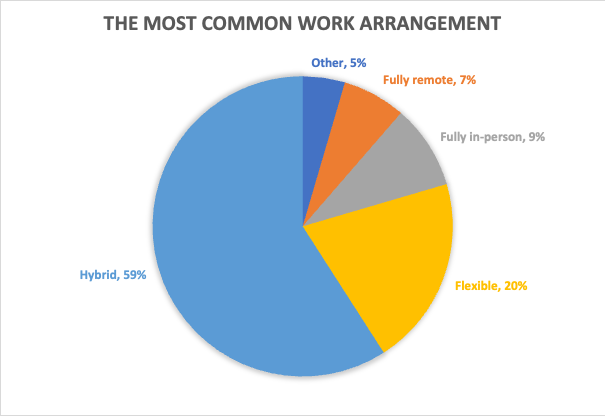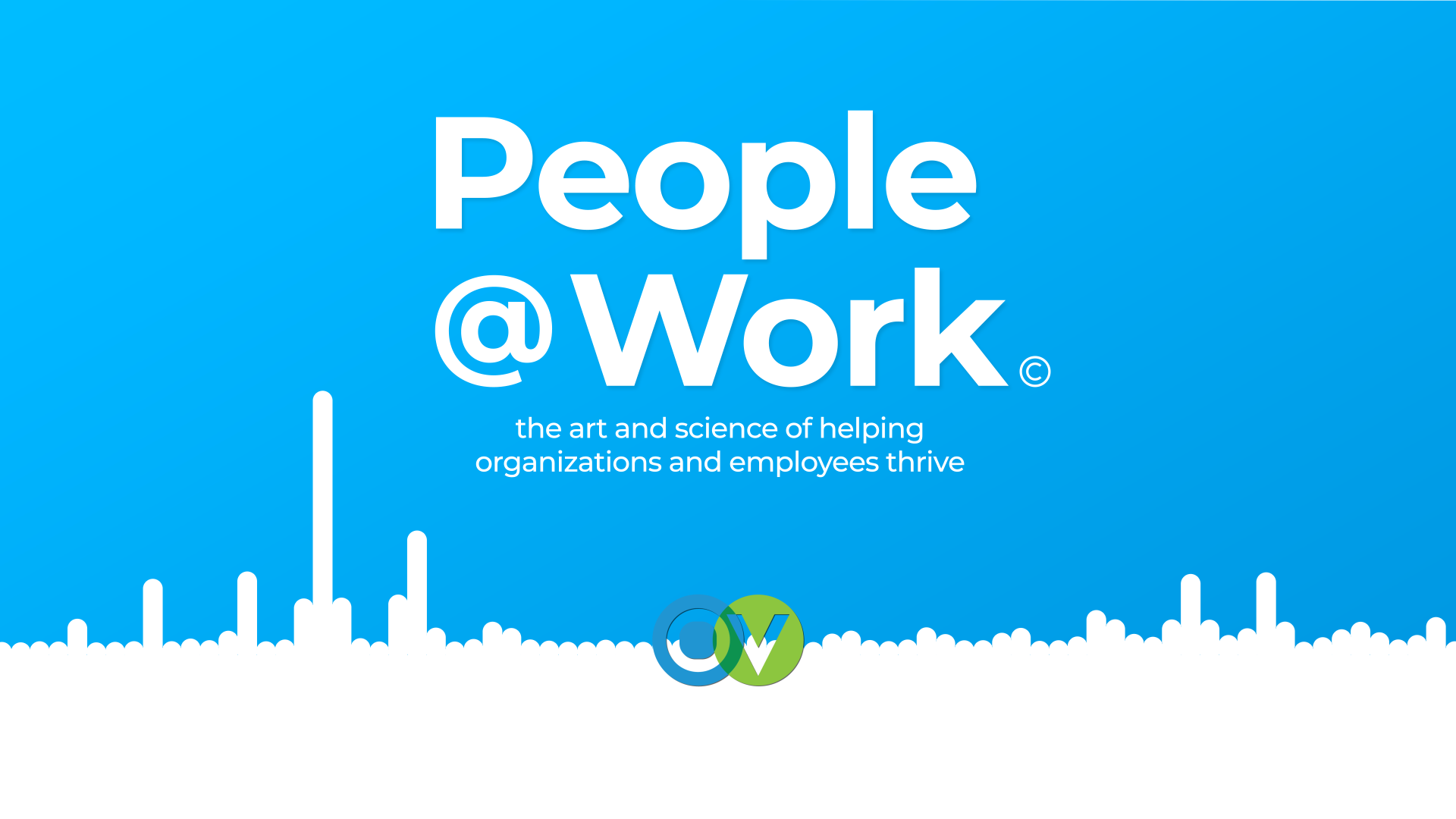
Ever since March 2020, organizations have grappled with when, and how, to bring remote workers back to the office, with some debating whether they should do it at all. Those that forced remote workers back often received pushback from employees. As a consulting firm focused on talent management, we wondered how organizations are making and evolving these decisions, so we decided to ask. We launched a survey soliciting feedback from organizational representatives about their work arrangement policies. Questions broadly focused on the details and decision-making surrounding these policies. Specifically, we wanted to know what information the decision-makers used when crafting their policies. More than 50 organizations responded, primarily via executives and HR employees in various roles at large organizations, across a variety of industries (e.g., heavy manufacturing, professional services, technology) and produced interesting results.
Understanding the Current Landscape
First, we asked companies about how they’ve experienced changes to their policies since the pandemic. Clearly, not much has changed since the first remote workers were called back into the office. Over the past two years, most respondents (79%) indicated that they’ve experienced very few/some changes in their work arrangement policy, and only a few policies are greatly evolving (14%). Further, the vast majority of respondents indicated their policy has been set for at least a year (82%). Given the stability of the policies in the sample, respondents have had a chance to observe and understand others’ reactions, benefits, and drawbacks to their different work arrangement policies.
[Read More: When Employees Say No to Returning to the Office]

Common Organizational Policies
For most organizations, the policy varied internally with more than half saying the policy changed depending on job type (64%), and differences existed among departments and regions as well. Overall, the most popular type of policy was hybrid (62%), which allows employees to work both remotely and in-person. The second most popular, flexible work arrangement (20%), allows individualized work arrangements as opposed to an all-encompassing policy. The other policies (in-person, remote, and other) were in the minority. When asked to describe the policy in more detail, many indicated that knowledge workers, or people who are mainly corporate office workers, are primarily required to be in office 2-3 days a week. Other job functions, such as those who work in manufacturing, do not have the option to work remotely as their job responsibilities generally require them to be onsite. However, this was even true during the earliest days of the pandemic, where many first responders, manufacturing laborers, and other blue-collar workers had no choice but to continue working onsite and sometimes in unsafe conditions.

Understanding Employee Feedback on Remote Policies
Respondent’s perceptions of these policies were middling. Over half the respondents (57%) felt communication about their policy was satisfactory and a fifth of people felt neutral. 64% felt that employees were satisfied with their work arrangement policy. Usually, a favorable result is closer to 75% of the sample, so communication and satisfaction could stand to improve.
We also asked some open-ended questions to better understand the nuance around how employees are receiving work arrangement policies. Specifically, we asked respondents for their view of the benefits and drawbacks of their organization’s policy. Regardless of the work arrangement type, there were common themes. Unsurprisingly, those who can work some days remotely felt that it allowed more flexibility, autonomy, work-life balance, a better talent pool, and in some instances collaboration. However, others saw the opposite, citing difficulties with collaboration, particularly if people weren’t in the office on the same days. Further, considering many companies have policies that differ according to role, department, or location, there are inconsistencies in how the policies are carried out, their enforcement, and issues with perceived equity and fairness. Issues with equity and fairness often came up for organizations who had different policies depending on role. For example, the requirement for line workers to come in and the possibility for corporate employees to work remotely prompted feelings of inequity. Another interesting finding referenced the extra effort required to connect when working remotely. Organizations should consider implementing policies that address these concerns, such as allowing people who work a hybrid schedule the flexibility to coordinate in-office days with their team or department.

How Leadership Makes Decisions
Consistent with what we’ve been seeing in the news recently, three quarters of these policies are set by the CEO or top leadership (77%). Though it’s not always a top-down mandate. In fact, most organizations cite using employee feedback to make decisions (70%), and about half of respondents feel the collection (55%) and utilization (47%) of this information is effective. Some sources of information they’re using include surveys, industry information, and executive perspective. Yet despite efforts to use multiple sources of information to inform policy decisions, there is seemingly a discrepancy between evidence and practices. For example, very few participants felt their executives are very well informed on the issue. In fact, over half responses felt their executive only had some to very little understanding of how to implement a remote/hybrid schedule. This suggests that executives need to be better informed before making such crucial decisions. Employee input can help determine the policy statement, as well as its implementation and evolution over time.
[Related Blog: 3 Things to Know About Employee Surveillance]
Moving Forward
While some companies may be mandating full return-to-office policies, the majority seem to believe that some form of hybrid work environment is here to stay. We know this can create challenges around culture (28%) and teamwork (35%), and these are valid concerns as remote work poses some obstacles. However, those obstacles aren’t insurmountable. These results and other research indicate that choosing a one-size-fits-all solution, like a mandatory return-to-office policy, can backfire. Organizations would benefit greatly from including employees in these conversations shaping, implementing, and maintaining policy decisions. They can inquire about the important topics resulting from this survey, such as fairness/equity, work-life balance, collaboration, and autonomy, to better understand current employee perceptions of policies and make decisions consistent with the results.
Author
Our focus is leveraging a combination of personalized technology, scientifically grounded consulting services, and partnership-oriented project management teams to help businesses improve their organizational effectiveness. We believe in developing a strong partnership with our clients to ensure impactful results that will make a difference. Our team of experts is committed to personalizing our solution to align with your unique strategies, generate useful insights, and drive positive action. Our services included helping businesses create, administer, and interpret employee and organizational data to develop targeted improvement plans resulting in real, long-lasting change.







